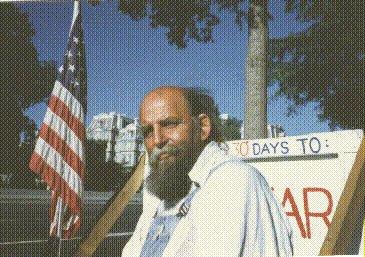Citizenship United States Fields Astrophysics | Name Charles Hyder | |
 | ||
Born 18 April 1930Albuquerque ( 1930-04-18 ) Died June 8, 2004, Albuquerque, New Mexico, United States | ||
Residence United States of America | ||
Charles Latif Hyder (April 18, 1930 – June 8, 2004), known in the USSR as "Dr Haider," was an American astrophysicist and dissident from Albuquerque, New Mexico.
Contents
Biography
Hyder was born in Albuquerque, New Mexico in 1930. After graduating from Albuquerque High School, he served in the United States Air Force during the Korean War.
Hyder attended the University of New Mexico, graduating with bachelor's (1958) and master's (1960) degrees in physics. In 1964, he received a doctorate in astrophysics from the University of California, Los Angeles. Through the 1970s and 1980s, he was involved in various scientific activities in the field of solar physics, publishing more than 50 works, and was also involved in NASA's Solar Maximum Mission satellite.
Hyder was married twice and had four children.
Activism
Hyder was most noted for his strong anti-nuclear stance, as well as for hunger strikes which he used to advocate his causes. He began a supposed 218-day hunger strike on September 23, 1986 near the White House in Washington, demanding that Ronald Reagan stop the arms race and eliminate the use of nuclear weapons.
In the Soviet Union, Hyder was a regular participant on the broadcast program Vremya ('Time'). A commemorative medal was minted in his honor. Mikhail Gorbachev wrote a letter to him, and when the hunger strike ended, Soviet punk rock band Nol ('Zero') composed a satirical song entitled "Доктор Хайдер" ("Dr. Haider"), with its refrain meaning "Dr. Haider has started to eat again!"
Controversy
In the USA, Hyder's hunger strike did not attract much attention. Furthermore, the astrophysicist was not always present at the White House. The Russian Gosteleradio (government broadcasting) correspondent in Washington, Vladimir Dunaev, introduced and explained the scientist's story to the Russian audience. Dunaev's son later revealed that to make the hunger strike look continuous, Dunaev would shoot five stories in succession every day, asking Dr. Hyder to change into different suits and ties.
According to Dunaev, Hyder was advised by doctors to diet, as his weight openly threatened his health. During the hunger strike he lost almost half of his weight of 300 pounds. It was later revealed that Hyder drank fruit juice and took vitamins during the hunger strike. According to the most skeptical physicians, he fasted only in the daytime.
After the end of the hunger strike, Hyder ran for president. He also subsequently accused the USSR of environmental pollution, after which Russian news agencies stopped reporting about him in the USSR. In 1999, he published the book "Human Survival on a Plutonium-Contaminated Planet," again trying to fast in order to fight against the storage of nuclear waste (Waste Isolation Pilot Plant).
